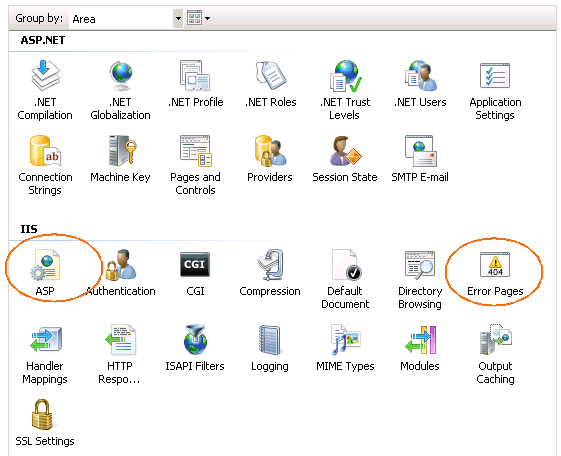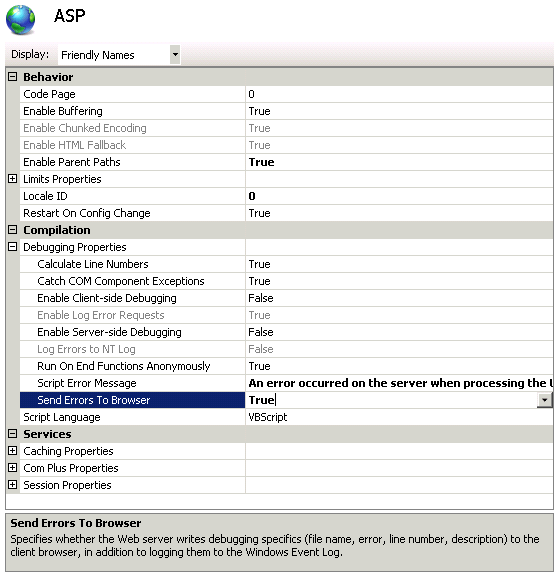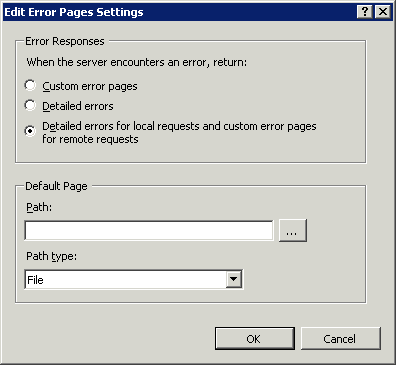Making classic ASP error messages display in the browser
In IIS 7 (Windows 2008 Server) the default settings prevent ASP error messages from being displayed to the user. This is good in a working web site but error messages are essential during the development and debugging stages. The error messages can be switched on through IIS properties but they require two adjustments. Part of the IIS property screen is shown below and the two sections that need changes are highlighted, ASP and Error Pages.

First, double click the ASP icon to open the ASP page. Expand the Debugging Properties node and set Send Errors To Browser to True. This is not enough to get a detailed error message. At this stage it will only show the error defined by Script Error Message.

Go back to the IIS properties as shown above and open the section for Error Pages. Select the link marked Edit Feature Settings from the list on the right and this opens the following dialogue. If you are viewing the pages with the server's own browser, you can select the bottom radio button as shown. This is the recommended selection for a live website because it will send custom error pages to an end user. Customer error pages are configured at the previous screen. If you are developing on a different computer you must set the radio button to Detailed Errors. This will send the full error message with an error code and line number. This is not advisable for a live website and the radio button should be changed back when debugging is complete.

Making errors display in Internet Explorer
Internet Explorer does not show proper error messages by default. To switch them on, go into Internet Options and find and clear the checkbox marked "Show friendly HTTP error messages" which is located under the Advanced tab and Browsing.

